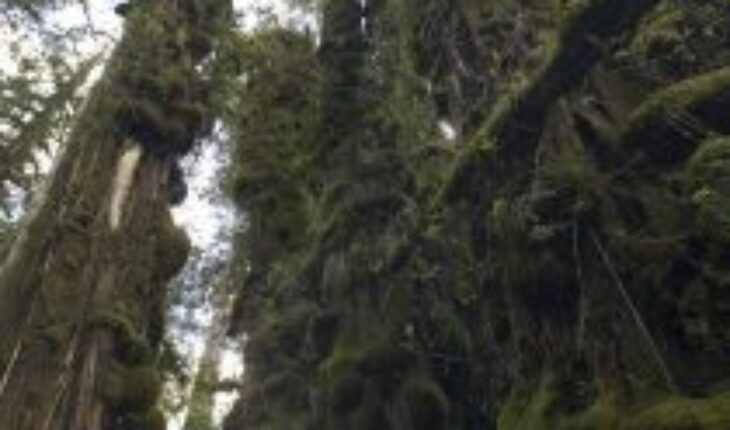Who protects biodiversity in Chile?
Today there is global concern about the loss of biodiversity on the planet. Scientific articles and lists on the extinction of species are published around the world, the latest published listing the 23 species extinct in the United States alone in recent years, including the ivory-billed woodpecker (Campephilus principalis). In all these lists NO Chilean species appear. And this is not a coincidence, nor the result of chance. This happens in Chile thanks to a years of work in the field of biodiversity conservation that is an example worldwide, but that in Chile is not recognized (it usually happens to us). No one is a prophet in his land.
Research on endangered species was strongly promoted by CONAF from the 1980s with the publication of the Red Books of Flora and Fauna of Chile, and has been successful in finding populations of all species that were in a precarious state of conservation. Such is the case with Avellanita bustillosii, last seen and quoted by Karl Reiche at the beginning of the twentieth century and of which today we already have several identified and controlled populations. So we also have Valdivia gayana, which was found with only one known population in the Plaza de Corral and now with several known and cadastral populations, and Gaultherya nubigena protected in Conguillío National Park. We could continue to list several more species that reflect the tremendous work being done in Chile in this area., the vast majority driven by CONAF from 1980 onwards.
Today CONAF has a cadastre of all the species identified in the Red Books with conservation problems, starting with the 11 species declared endangered. With this cadastre, unprotected species and populations were identified and the task of protecting them began. Thus, the following were created: the Bellotos del Melado Reserve, to protect the Belloto del Sur; the Los Queules National Reserve, with three species on the list: the queule, the pitao and the red michay; the Los Cardones Natural Monument in Arica (2010), to protect this remarkable desert species; the Los Flamencos National Reserve (1990) to protect this emblematic species and the Humboldt Penguin National Reserve (1990) to protect this remarkable Chilean bird.
With this same purpose were created: the Llullaillaco National Park in Antofagasta in 1995, the Paposo Norte Natural Monument in 2013, the Morro Moreno National Park in 2010, and in Atacama the Llanos de Challe and Nevado Tres Cruces National Parks, all with the aim of protecting the remarkable and very fragile flora of the desert, with several endangered and vulnerable species.
Also within the framework of this remarkable initiative, the Roblería del Cobre de Loncha National Reserve was created in the Metropolitan Region (1996); in the Maule Region the Altos de Lircay National Reserve (1996); in the Los Ríos Region, the Mocho Choshuenco National Reserve (1994) and the Alerce Costero National Park (2010); in the Los Lagos Region, the Islotes de Puñihuil Natural Monument (1999), the Lahuén Ñadi Natural Monument (2000) and the Corcovado National Park (2005); and in the Biobío Region the Nonguén National Park in Concepción (2009) and the Altos de Pemehue National Reserve (2009). Also in the Maule Region, the Los Ruiles National Reserve was expanded from the original 45 hectares to 324.7 hectares.
In 1980, before CONAF took on the task of protecting biodiversity as part of the great task of nature conservation, the National System of Protected Wild Areas of the State (SNASPE) had only 45 units covering 9.76 million hectares, 13 % of the national territory. Today, thanks to the work of CONAF, the country has 106 units of protected wilderness areas, covering 18.6 million hectares, in all regions of the country, covering 25% of the national territory.
When CONAF decided to give a boost to this task, at the beginning of the 80’s, it hired the outstanding Professor of the University of Chile, Rodolfo Gajardo Michell. The task was to create a National Vegetation System that would allow evaluating the representativeness of the SNASPE and its value in the task of conservation. The first national catalogue was also generated of the Vascular Flora of Chile, published in its first version in the late 80’s.
With this background, the first Chilean scientific meeting was organized to determine the species of flora with conservation problems, from August 27 to 30, 1985 at the Libertador Hotel, a few steps from the central house of the University of Chile. Scientists such as Edmundo Pizano, Clodomiro Marticorena, Mélica Muñoz, Oscar Matthei, Luisa Navas, Guillermo Rodríguez, and of course Rodolfo Gajardo participated in it. All gathered by CONAF for this great task. Two years later, from April 21 to 24, 1987, the Fauna Symposium was also held with 64 participants, including Jürgen Rottmann, Miguel Stutzin, Ivan Benoit, Daniel Torres and José Yañez.
In this way CONAF created a solid frame of reference, which allowed it to develop a systematic and effective work.
The most critical cases of biodiversity loss are concentrated in Chile on the Juan Fernández Islands, with a dozen species in critical situation. These islands were devastated by adventurers and fishermen during the nineteenth and early twentieth centuries. In 1935 the Juan Fernández Archipelago National Park was created and since the late 70’s CONAF began a systematic protection action, which has its culminating point with the rescue of the species Wallenbergia larrainii (sometimes considered the same species as W.fernandeziana), of which only one specimen remained and that these were those species that bloom only once in a lifetime and die. CONAF professional Marcia Ricci discovers that this single specimen was blooming and remained vigilant until the seeds matured with the consequent death of this last specimen. Ricci was there, he harvested the seeds and today we have this species cultivated in the Botanical Garden of Viña del Mar, saved from extinction. How many people, how many institutions in the world can tell a story like this? The task in Juan Fernández is gigantic and will take at least a century, but at least we have already begun.
The last species of tree extinct in Chile is the Sandalwood of Juan Fernández, whose last specimen was seen by the Swedish naturalist Skottsberg during his first trip in 1908. When he returned to Juan Fernández in 1916, they had already cut this last specimen. There are 22 tree species that have become extinct in Chile, 21 of them on Easter Island, all of them before 1722, before the island was discovered by the Dutch navigator Jakov Roggeveen. In mainland Chile, the Bromus mango -cereal grown by the Mapuche people-, was last seen by Johow in 1915 in Contulmo.
This is the core of the history of extinctions in Chile, no species during the last half century
The species that in the 80s seemed on the verge of extinction today are no longer so, although their situation remains one of care. And that is why we do not see or will not see any Chilean species in any of the lists of extinct species that are published today in the world. CONAF did not require any law to carry out this noble task, it assumed it as its own, as the essence of its institutional mission. He did not need any law, because there is no love of force or commitment by decree.
However, this situation can now be changed, and it is up to the National Congress for Chile to remain outside these shameful lists of extinct species.
Today we are discussing the creation of a Biodiversity Service, a bill drafted behind closed doors by the Ministry of the Environment, which has not had any experience or participated in this 50-year history of protecting biodiversity and nature in Chile. This bill aims to dress the Ministry of the Environment in other people’s clothes, thus destroying 50 years of work to protect biodiversity and nature in Chile. 50 years of work that until today allow us to say with pride: NO SPECIES IN CHILE.
Follow us on
The content expressed in this opinion column is exclusively responsibled of its author, and does not necessarily reflect the editorial line or position of El Mostrador.





